
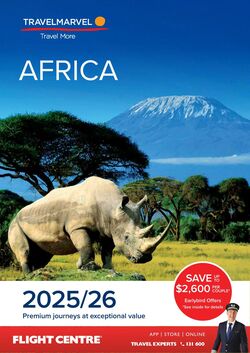






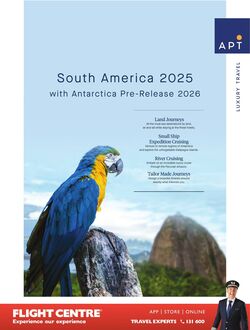
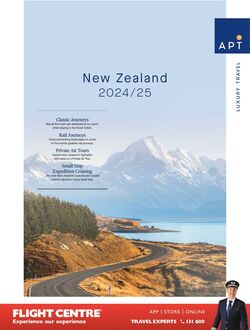
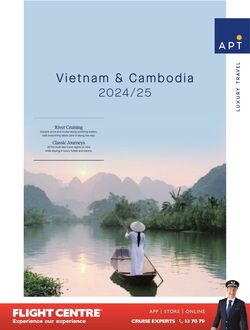
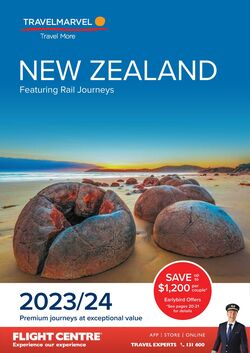

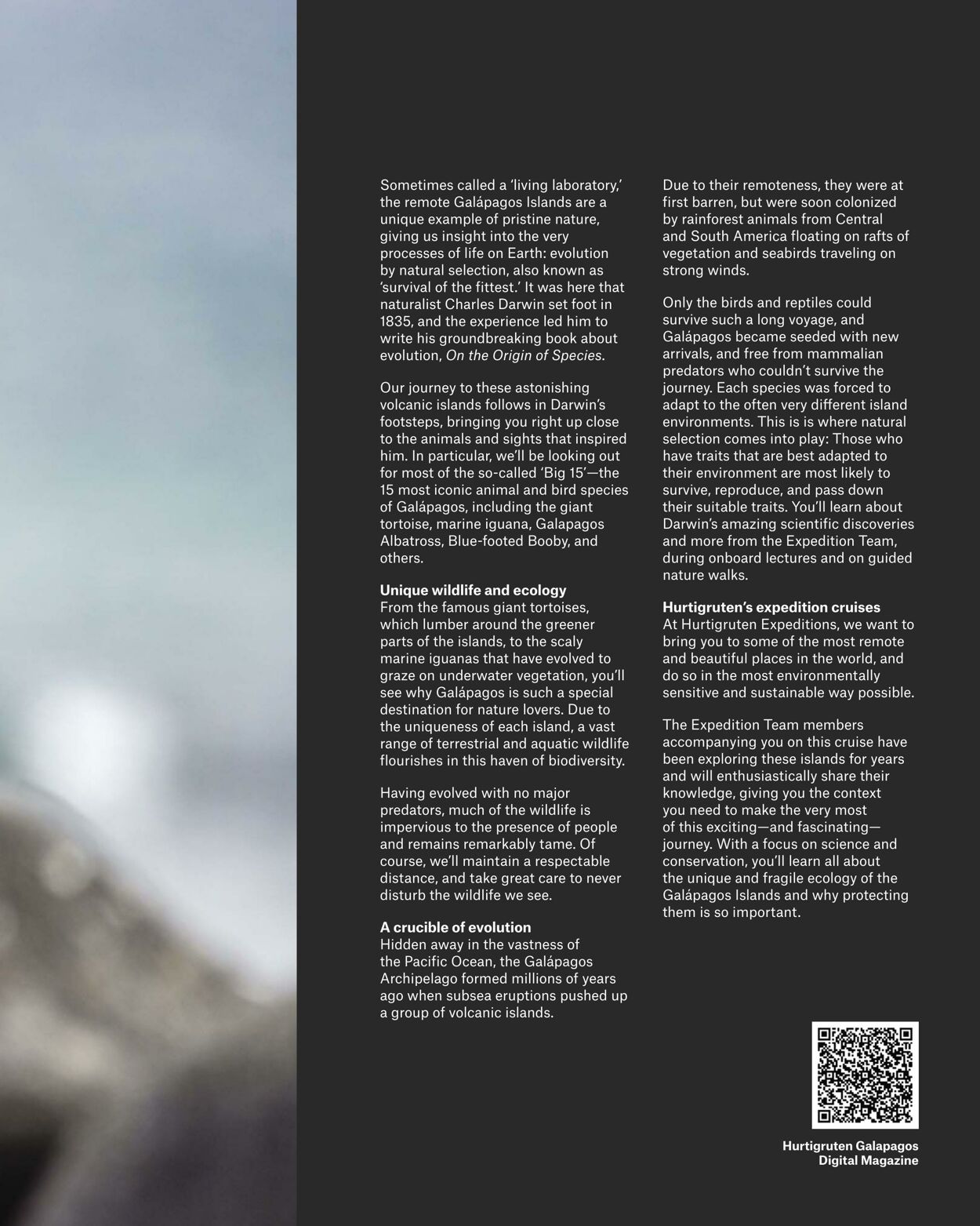
Products in this catalogue
See eene ee MURR Esra UMC TelCRELLle-lee MOU el ey unique example of pristine nature, PMR M ET ain RCN processes of life on Earth: evolution by natural selection, also known as BAN Uttam CMCC ULL naturalist Charles Darwin set foot in 1835, and the experience led him to write his groundbreaking book about Ae eto Onm ce lee MLAS Ten Our journey to these astonishing volcanic islands follows in Darwin's footsteps, bringing you right up close to the animals and sights that inspired him. In particular, we'll be looking out for most of the so-called ‘Big 15'—the 15 most iconic animal and bird species of Galapagos, including the giant tortoise, marine iguana, Galapagos Albatross, Blue-footed Booby, and Colne Unique wildlife and ecology From the famous giant tortoises, icmntcaeianencreiccncn parts of the islands, to the scaly marine iguanas that have evolved to eleva MoM iN CMe NCm teat aU see why Galapagos is such a special destination for nature lovers. Due to UMN e Ree oC Uae Ce range of terrestrial and aquatic wildlife Big M MENU -LmeL modelo [Tectia Having evolved with no major predators, much of the wildlife is impervious to the presence of people PI nCueencuea cack er Coto et MoM MET UMCeyol tere 1e) (3 distance, and take great care to never Cte RAUL LCRA Ul Poel) Tice UeaGnuCn coasted the Pacific Ocean, the Galapagos Archipelago formed millions of years ago when subsea eruptions pushed up a group of volcanic islands. PMR acum Cu Som CIs first barren, but were soon colonized by rainforest animals from Central PC Rse ucuten erties vegetation and seabirds traveling on strong winds. Only the birds and reptiles could survive such a long voyage, and Galapagos became seeded with new arrivals, and free from mammalian predators who couldn't survive the Delt aa =o eyo el CRC eeLe od adapt to the often very different island Cc ORL OL selection comes into play: Those who PVMCOR IN cee eccn ReareTi a UaNULColaT tn lave Lom tg edd aL Cc ARCe) survive, reproduce, and pass down their suitable traits. You'll learn about Darwin's amazing scientific discoveries and more from the Expedition Team, during onboard lectures and on guided nature walks. Hurtigruten’s expedition cruises At Hurtigruten Expeditions, we want to bring you to some of the most remote and beautiful places in the world, and COReRUC ea mmcnmi met 7 sensitive and sustainable way possible. Bee seeder hem CcUMa lt) accompanying you on this cruise have been exploring these islands for years To MIRE ieler- VUE CRIs EMC REMC RR uaeniCr Nel Mae R CRU UT Rs AUeia of this exciting—and fascinating— A Rua cree easecutt conservation, you'll learn all about the unique and fragile ecology of the er Tele Ee RIL ae croLeLLe) them is so important. Prec Ltd Digital Magazine
| Name | Details |
|---|